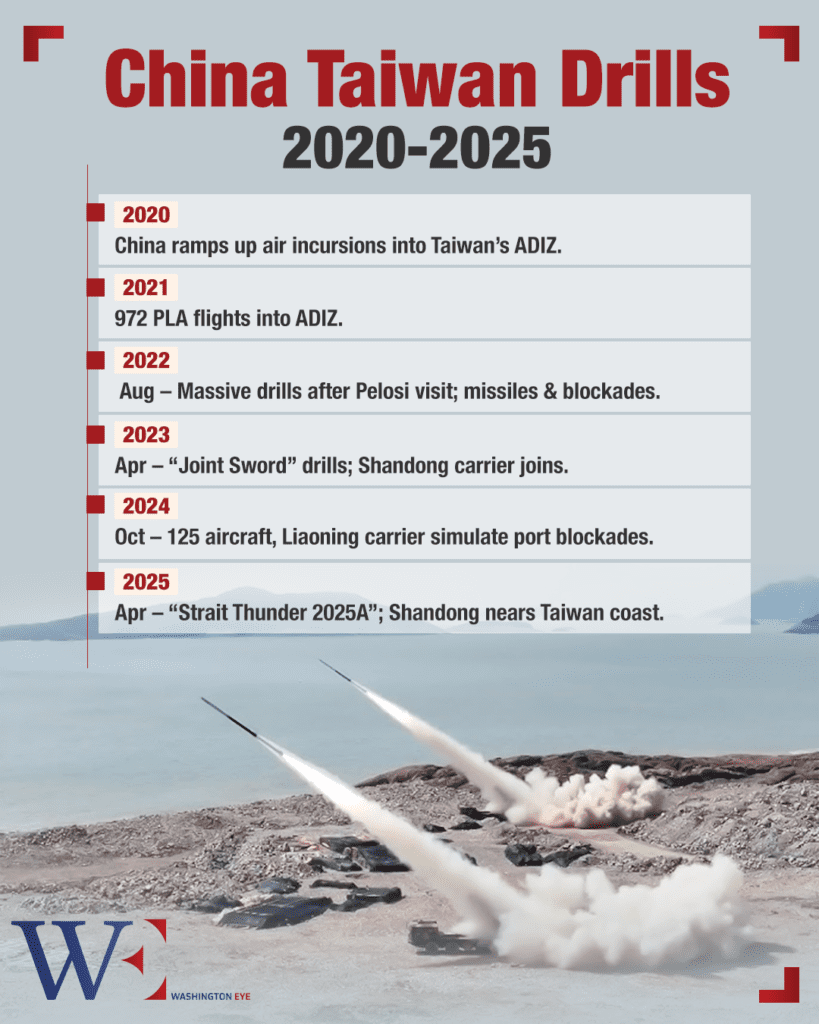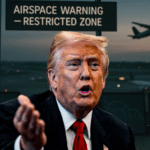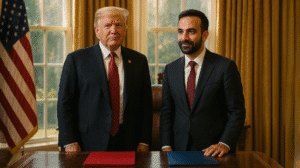In a significant escalation of regional tensions, China has initiated large-scale military drills surrounding Taiwan, a move it describes as a “stern warning” against separatist activities. The exercises commenced on April 1, 2025, and involve coordinated operations by the People’s Liberation Army (PLA), navy, air force, and coast guard. These drills are perceived as a direct response to recent statements by Taiwan’s President Lai Ching-te, who has been vocal about resisting annexation and maintaining Taiwan’s sovereignty.
The PLA’s Eastern Theater Command announced the initiation of the exercises, emphasizing their focus on joint blockade operations, sea-air combat readiness, and precision strikes on key targets. The drills encompass areas around Taiwan, including the Taiwan Strait, the north and south ends of the island, and regions to the east. Notably, the Shandong aircraft carrier group is participating, with air units operating in the Pacific Ocean. Taiwan’s defense ministry reported the presence of 76 Chinese aircraft and 19 naval vessels near the island, with some crossing the median line of the Taiwan Strait, an unofficial boundary that both sides had traditionally respected.
In addition to the naval and air maneuvers, Chinese coast guard vessels have intensified their operations around Taiwanese-held islands, further heightening tensions. The exercises also featured simulated precision strikes on critical infrastructure, including ports and energy facilities, utilizing advanced weaponry such as modular rocket launch systems with a range of up to 300 kilometers.
Chinese authorities have framed these drills as necessary measures to counteract what they perceive as provocative actions by Taiwan’s leadership. The PLA stated that the exercises serve as a “strong punishment” for the “separatist acts” of Taiwan’s government and a stern warning against external interference. Chinese state media have been particularly critical of President Lai, labeling him a “parasite” and accusing him of escalating tensions with his pro-independence stance.
In response to the PLA’s maneuvers, Taiwan’s military has heightened its alert status and deployed forces to monitor the situation closely. The defense ministry condemned China’s actions as irrational provocations that disrupt regional peace and stability. President Lai visited a military base during the drills, expressing confidence in Taiwan’s defense capabilities and urging citizens to remain assured. Taiwan’s government has consistently rejected Beijing’s sovereignty claims, emphasizing the island’s commitment to democratic values and self-governance.
The United States has voiced strong opposition to China’s military activities around Taiwan. The U.S. Department of State criticized the drills as destabilizing and reaffirmed its commitment to supporting Taiwan against coercive actions. Defense Secretary Pete Hegseth’s recent visit to Asia underscored the U.S.’s dedication to bolstering regional security and deterring potential aggression from Beijing. The U.S. has also emphasized the importance of maintaining peace and stability in the Taiwan Strait, urging China to cease its provocative military operations.
Japan and the European Union have echoed similar sentiments, expressing concern over the heightened tensions and calling for restraint from all parties involved. The international community remains watchful, recognizing that any escalation could have far-reaching implications for global security and economic stability.
China’s military exercises around Taiwan are not unprecedented. The PLA has a history of conducting drills in the vicinity of the island, often as a show of force in response to political developments in Taiwan or interactions between Taiwanese and foreign officials. Notable instances include the 1996 missile tests following Taiwan’s first direct presidential election and the large-scale exercises in 2022 after a visit by U.S. House Speaker Nancy Pelosi. These actions are part of China’s broader strategy to assert its claims over Taiwan and deter moves toward formal independence.
The current drills represent a significant escalation in cross-strait relations, with potential implications for regional security. Analysts suggest that while the PLA’s capabilities have advanced, a full-scale invasion of Taiwan remains a complex and risky endeavor. However, the continuous military pressure serves multiple purposes for Beijing: it signals resolve to both domestic and international audiences, tests Taiwan’s defense responses, and potentially intimidates other countries from deepening ties with Taipei.
For Taiwan, these developments underscore the importance of strengthening its defense capabilities and securing international support. The island’s leadership has been proactive in seeking closer security partnerships and enhancing its military readiness to deter potential aggression. The situation also places the U.S. and its allies in a delicate position, balancing commitments to Taiwan’s defense with the broader goal of maintaining stable relations with China.
China’s recent military drills around Taiwan mark a critical juncture in cross-strait relations, reflecting escalating tensions and the complex interplay of regional and international dynamics. As both sides continue to assert their positions, the potential for miscalculation or unintended escalation remains a concern. The international community’s response will be pivotal in shaping the trajectory of this dispute and ensuring that channels for dialogue and peaceful resolution remain open.
















